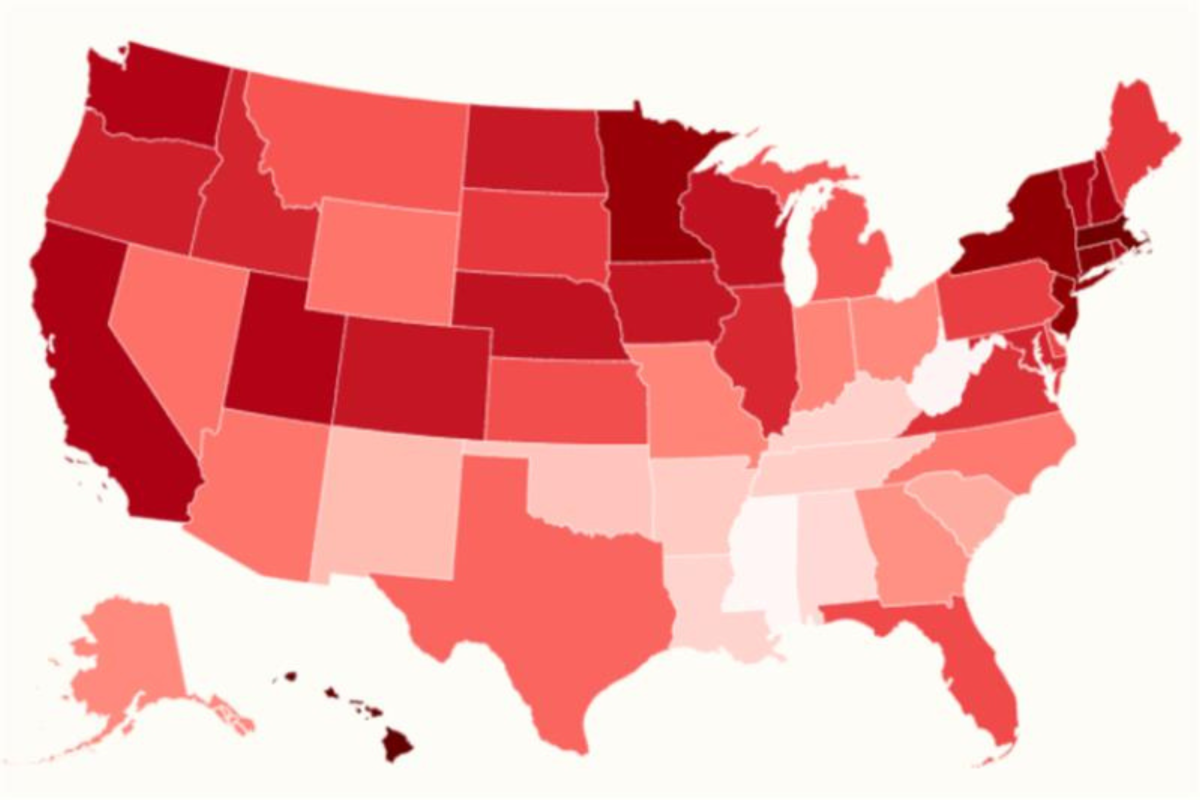
Life expectancy in the United States can vary dramatically depending on where you live, with a new study showing nearly a nine-year gap between the top and bottom states.
Hawaii came out on top, with a life expectancy of 79.9 years, while Mississippi ranked last with a life expectancy of 70.9, according to research by hormone health clinic Feel30, which used CDC data on life expectancy at birth to calculate a mean life expectancy.
Why it Matters
The average life expectancy for men and women across America is 78.4 years, according to the CDC’s most recent data, but the difference in life expectancy across U.S. states reflects inequalities in public health, access to care, and general socioeconomic conditions.
“[The disparity is] driven by social and economic factors, which are far beyond healthcare. They’re driven by history, by income,” Professor of Medicine at Brown University, Ira Wilson, previously told Newsweek. “When you add on to it low quality health and healthcare infrastructure you’ve got a double whammy.”
What To Know
Hawaii leads the nation with an average life expectancy of 79.9 years, 77 years for men and 83.1 years for women.
The rest of the top five are made up of Massachusetts (79.6 on average, 76.9 for men and 82.2 for women), Connecticut (79.2 on average, 76.3 for men and 82 for women), New Jersey and New York tied in fourth (79 on average, 76.3 for men and 81.6 for women) and Minnesota (78.8 on average, 76.3 for men and 81.4 for women).
Conversely, Mississippi is at the bottom of the list, with an average life expectancy of 70.9 years, 67.7 for men and 74.3 for women.
The rest of the bottom five are made up of West Virginia (71 on average, 68.1 for men and 74.2 for women), Alabama (72 on average, 68.9 for men and 75.3 for women), Louisiana (72.2 on average, 68.8 for men and 75.9 for women) and Kentucky (72.3 on average, 69.6 for men and 75.3 for women).
Most states with the highest life expectancies are found in the West and Northeast, while those with the lowest are concentrated in the South.
Feel30’s Lead Nurse Practitioner Anneliese Cadena said that it was “particularly striking” that, across all states, women are outliving men by five to seven years on average.
“For men concerned about health and longevity, these figures serve as a reminder of the importance of proactive health management,” she said. “Regular health screenings, proper nutrition, stress management, healthy sleep habits and maintaining physical activity are fundamental for those looking to increase their healthy years. The goal isn’t just adding years to life, but adding life to those years.”
What People Are Saying
Feel30’s Lead Nurse Practitioner Anneliese Cadena said: “These significant regional differences in life expectancy highlight how location and access to healthcare can dramatically impact longevity.”
Wilson previously told Newsweek, “If you look at smoking rates, if you look at obesity rates, if you look at childhood mortality rates, all of those things are correlated and probably driven by a combination of history and then structural, social, economic factors, and health factors.”
What Happens Next
Addressing the factors behind these disparities remains a public health priority. As state and local governments consider these new figures, it remains to be seen whether further action may follow to improve access to quality healthcare, support healthier lifestyles, and reduce socioeconomic gaps that drive mortality differences across the country.



